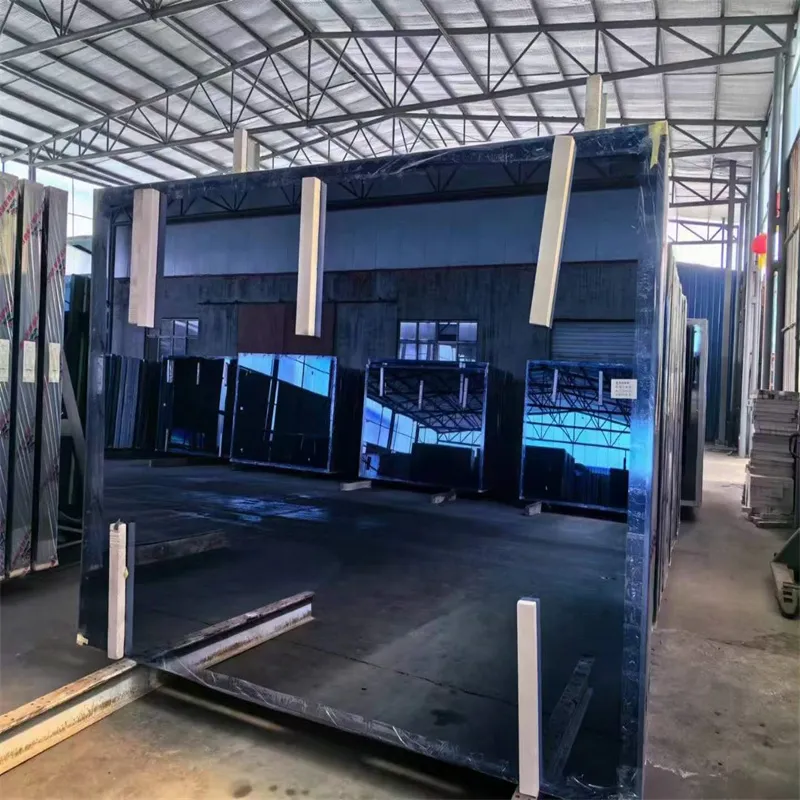Dec . 26, 2024 20:18 Back to list
Exploring the Aesthetics and Applications of Colored Float Glass in Modern Design
Colored Float Glass A Window to Creativity and Design
Colored float glass represents an innovative and versatile material widely used in architecture, art, and interior design. This unique form of glass is made through a float glass process where molten glass is floated on top of molten tin, providing a smooth and uniform surface. The addition of metallic oxides during its production allows for the creation of a diverse palette of colors. From vibrant hues to subtle shades, colored float glass opens a world of creative possibilities for designers, architects, and artists alike.
One of the most compelling aspects of colored float glass is its aesthetic appeal. The vibrancy of colors can transform spaces, adding personality and enhancing the overall ambiance. Architects often incorporate this material into building facades, where colored glass can create stunning visual effects and help in energy efficiency. By strategically using colored float glass, architects can manipulate light, creating dynamic interactions between the building's interior and exterior environments. For instance, large glass panels in bold colors can make a statement while allowing natural light to filter in, reducing the dependency on artificial lighting during the day.
Furthermore, colored float glass is not limited to external applications. In interior design, it has gained popularity for use in partitions, furniture, and decorative features. The use of translucent colored glass in interiors can create a sense of depth and intrigue, allowing for playful interactions with light. In homes, colored glass can be employed in decorative elements, such as cabinet doors or sliding partitions, adding a splash of color while maintaining elegance. In commercial spaces, it can enhance brand identity, as businesses can use specific colors that align with their branding to create a cohesive and inviting atmosphere.
colored float glass

The environmental aspect of colored float glass also deserves attention. As sustainability becomes a critical focus across industries, glass recycling has emerged as a vital aspect of its lifecycle. Float glass can be recycled multiple times without losing quality, making it an eco-friendly choice. Furthermore, the energy-efficient properties of colored float glass can help reduce heating and cooling costs, rendering it a smart choice for environmentally conscious designers and architects.
In the realm of art, colored float glass has played a significant role in contemporary creativity. Artists have embraced this material to create installations, sculptures, and decorative pieces that captivate and inspire. The unique qualities of colored glass allow artists to experiment with light and shadow, creating intricate patterns and textures. The interplay of color, light, and form can result in mesmerizing works that draw viewers into a multi-dimensional experience. Artists often utilize techniques such as layering or backlighting to enhance the visual impact of their creations, pushing the boundaries of traditional art forms.
However, working with colored float glass requires precision and skill. The cutting, shaping, and installation processes demand specialized tools and expertise to ensure the desired results. As a result, collaborative efforts between architects, designers, and glass artisans are often necessary. This collaboration fosters a shared understanding of the material's potential and encourages innovative solutions that can elevate a project's overall design.
In conclusion, colored float glass serves as more than just a functional material; it is a catalyst for creativity and innovation. Its ability to influence light, color, and space makes it an invaluable resource in architecture and design. Whether enhancing a building’s facade or creating art that speaks to the soul, colored float glass invites exploration and imagination. As technology continues to advance and sustainability remains paramount, the future of colored float glass is bright, promising even more exciting developments in the design and art worlds. Embracing this versatile material allows us to view the world through a vibrant lens, transforming ordinary spaces into extraordinary experiences.
-
Safety and Style with Premium Laminated Glass Solutions
NewsJun.24,2025
-
Reinvents Security with Premium Wired Glass
NewsJun.24,2025
-
Premium Float Glass Line for Modern Architecture
NewsJun.24,2025
-
Low Emissivity Glass for Energy-Efficient Architecture
NewsJun.24,2025
-
High-Performance Insulated Glass Solutions for Modern Architecture
NewsJun.24,2025
-
Elevates Interior Style with Premium Silver Mirror
NewsJun.24,2025
Related PRODUCTS














